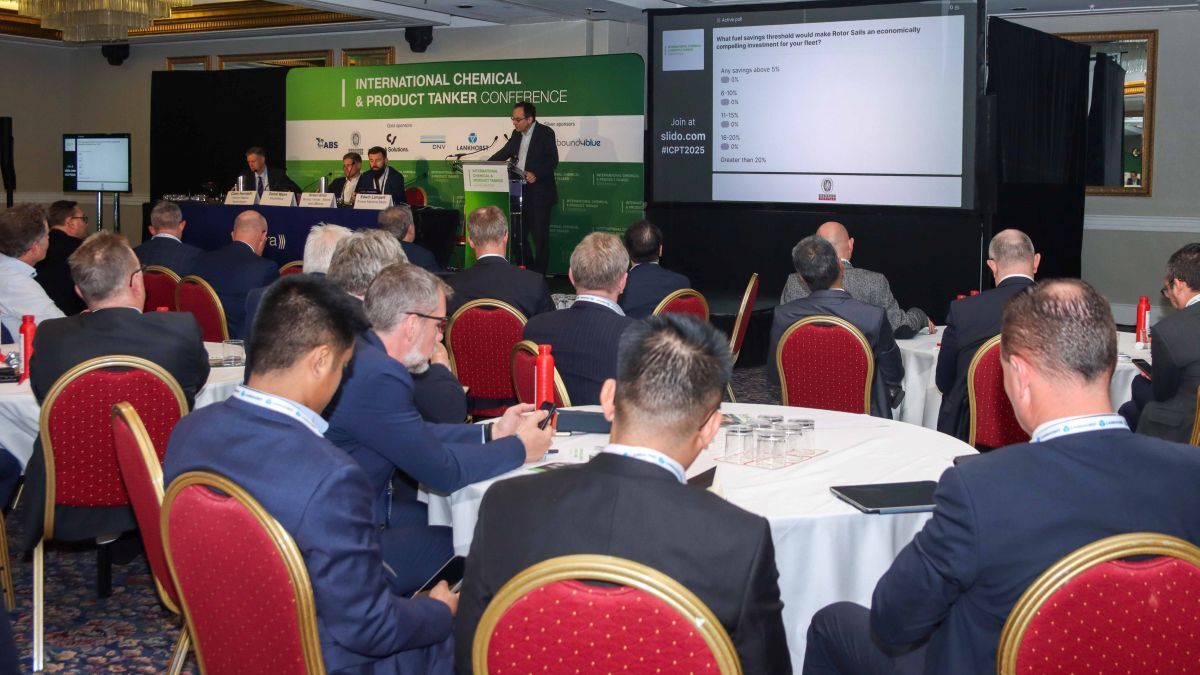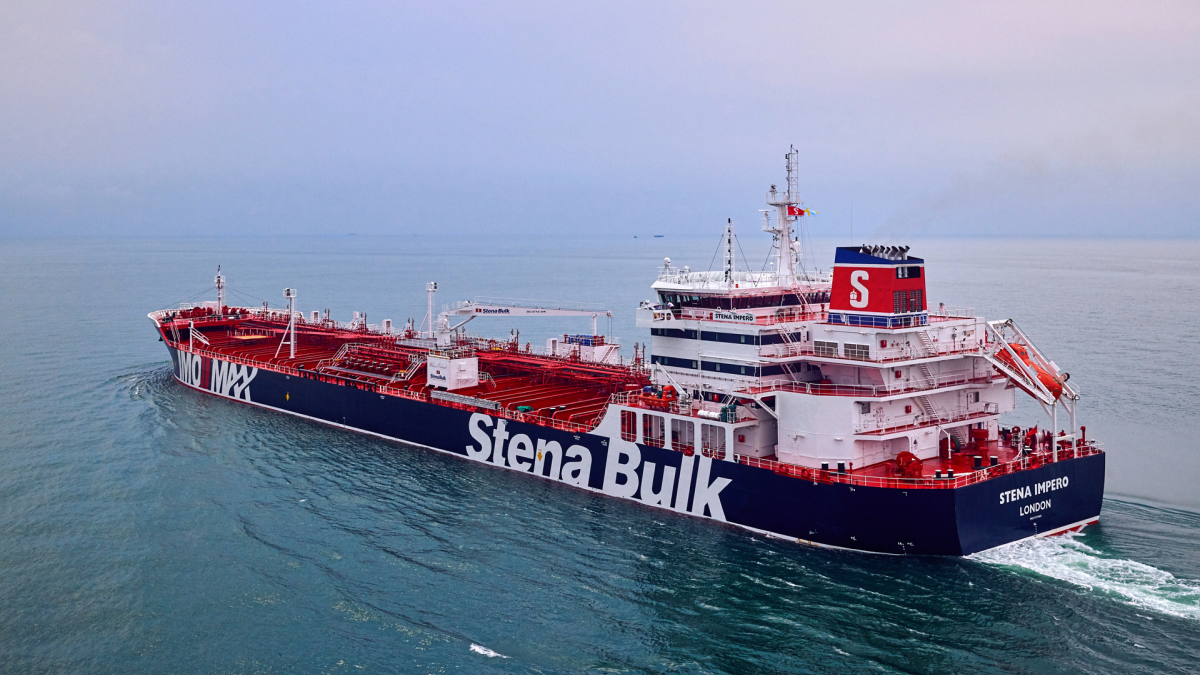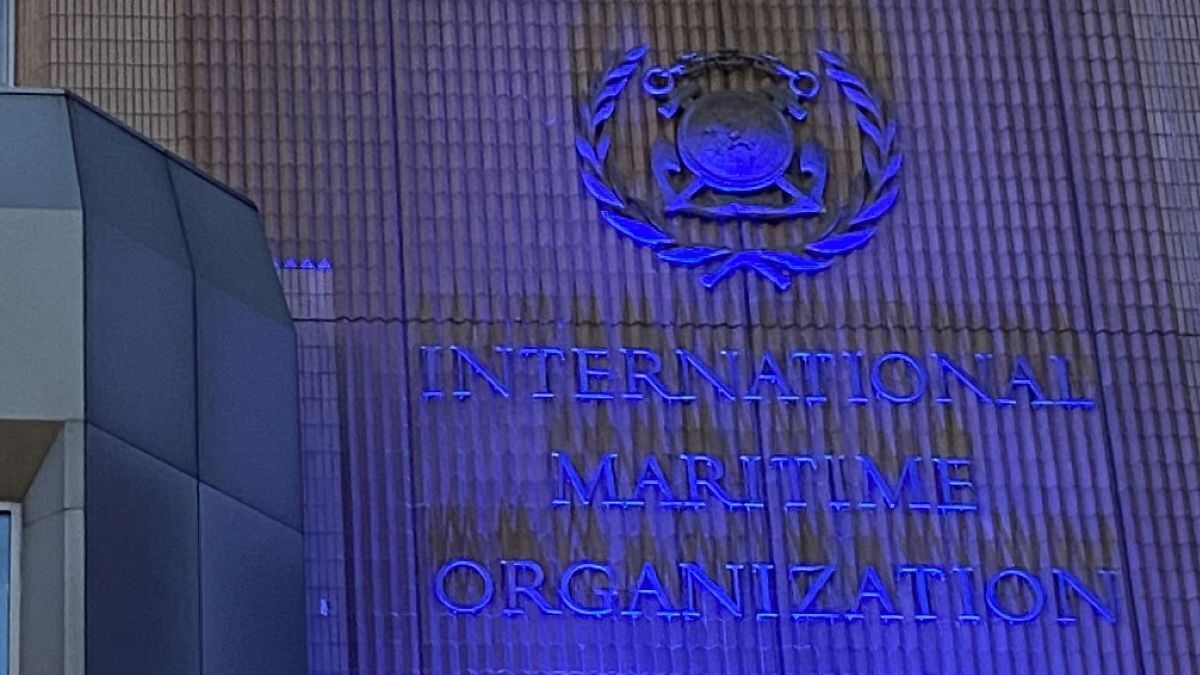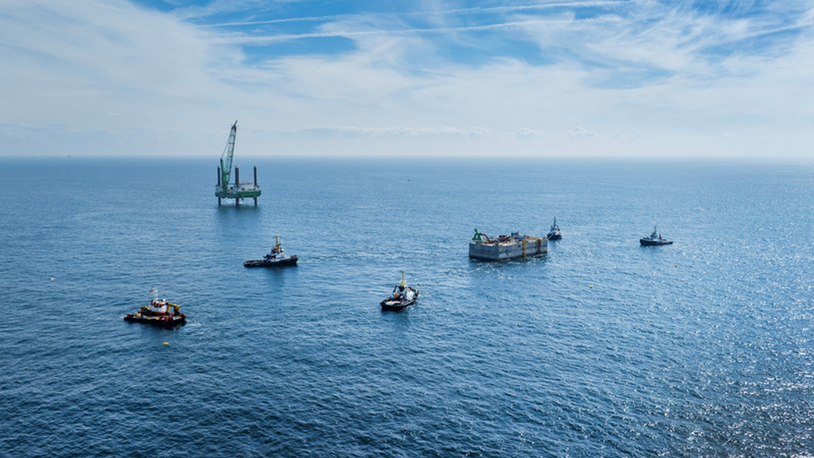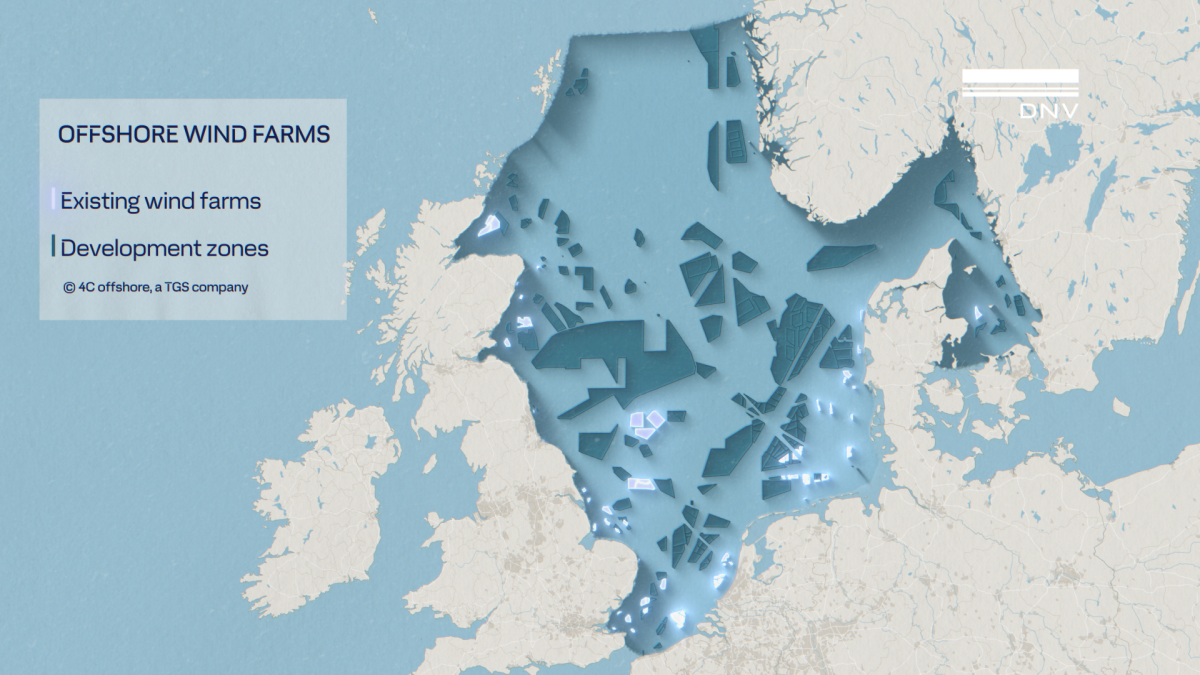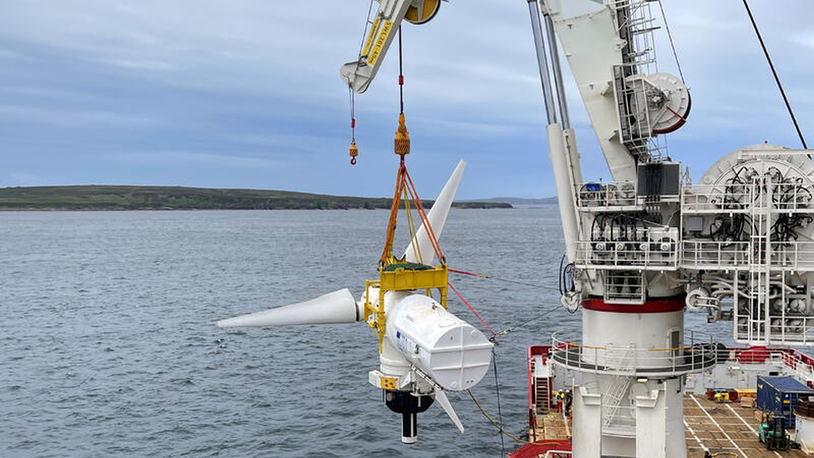Business Sectors
Events
Contents
LNG expanding its role as fuel for OSVs
A pioneer in applying dual-fuel (DF) technology to marine engines, Wärtsilä continues to extend its references with a programme embracing 20DF, 34DF and 50DF medium speed designs. With respective bore sizes of 200mm, 340mm and 500mm, these engines cover an output range from 1,000kW to 19.3MW to address a wide range of applications in the offshore market. Over 1,000 Wärtsilä DF engines delivered by October last year had accumulated more than seven million operating hours.
In addition to OSVs, Wärtsilä DF installations are serving or projected for LNG carriers; tugs; floating production, storage and offloading (FPSO) tonnage; ferries and inland waterway vessels. One of the largest plants powers the new P-63 FPSO vessel entering service offshore Brazil, whose W50DF machinery is the first to exploit gas-fuelled engines in producing more than 100 megawatt electrical (MWe). The installation can run on treated well gas or treated crude as well as on marine diesel oil (MDO).
Wärtsilä now targets the US market with a second dual-fuel engine, the W20DF, released there after earning Tier 4 NOx compliance last year from the Environmental Protection Agency. The larger 34DF design was the first dual-fuel family to gain that certification, earlier in 2013.
Lean burn, low pressure DF technology enables the engines to operate on natural gas and satisfy Tier 4 standards without the need for exhaust gas after-treatment. Diesel fuel used as a pilot ignition source only represents around 1 per cent of the total energy input, lowering operating costs as well as emissions.
NOx reductions are accompanied by considerable cuts in sulphur oxides (SOx) and carbon dioxide emissions when running on natural gas, and smokeless operation is attained. Efficient and economical operation on low sulphur fuels (less than 0.1 per cent content) is also facilitated in emission control areas (ECAs).
A power range from 1,056kW to 1,584kW is covered by the 20DF series while the 34DF design – following an uprating last year – now spans an output band from 2,900kW to 8,000kW. As well as a power increase – to 500kW per cylinder – the upgrade of the larger engine also benefited fuel economy and hence emissions, particularly when operating in liquid fuel mode.
The lack of an adequate LNG bunkering infrastructure – hitherto a hurdle to widespread adoption of gas as a marine fuel – is being addressed, with a growing number of facilities and projects in Europe, the USA, China and Singapore. Bunkering from tanker trucks or barges remains an option while appropriate terminals are completed.
Supporting DF engine-based power plant, Wärtsilä offers its own onboard LNGPac fuel gas storage and handling systems; such solutions will remain popular but might not best suit all ships. A handling system featuring mobile LNG fuel tank containers is an option worth considering in many cases, suggest Wärtsilä specialists Jonatan Byggmästar and Soren Karlsson: “For small and medium-sized vessels which do not require a large LNG capacity, mobile fuel tanks can be used instead of conventional stationary tanks. If LNG bunkering facilities are not available or bunkering is not possible, LNG can still be used as a fuel from tank containers. The containers can be transported by road to the nearest LNG terminal for refilling and then loaded on board the vessel. No bunkering procedures are required at the port.”
Wärtsilä’s ‘mobile answer’ to rising customer demand is LNGPac ISO, a modularised and flexible system for storing and preparing LNG as a fuel for vessels; fuel tank containers of standard frame sizes (20ft, 40ft and 45ft) are used. As well as the tank container, the system includes a docking station and an evaporator skid installed permanently on the vessel. The system is intended for installation on an open and naturally ventilated deck.
The first W34DF engines for US service will power Harvey Gulf International Marine’s six OSVs building at TY Offshore’s Gulfport, Mississippi yard. A dual-fuel diesel-electric power plant based on gensets driven by six-cylinder models will feed twin 2,700kW AC propulsion motors. The most environment-friendly in the Gulf of Mexico – the first to secure ENVIRO+, Green Passport certification from ABS – the vessels have a construction cost some 20 per cent higher than conventionally-powered OSVs, according to Harvey Gulf chief executive officer Shane J Guidry.
Competing with Wärtsilä’s programme, MAN Diesel & Turbo has strengthened its medium speed portfolio with a new 350mm-bore 35/44DF design, joining the German group’s established 510mm-bore 51/60DF series. The prototype, a six-cylinder model running at the Augsburg test facility, has reportedly demonstrated excellent performance and operating characteristics. Engines for the field are planned from mid-2014 after class approval.
An output of 530kW per cylinder at 720/750 rpm will allow the 35/44DF design to span a power band from 3,200kW to 10.6MW with in-line six to V20-cylinder models. Existing installations based on MAN 32/44CR Tier II diesel engines can be converted on board to dual-fuel status, meeting future IMO Tier III NOx emission regulations.
A range of fuels, including marine diesel oil (MDO), marine gas oil and heavy fuel oil (HFO), can be burned in liquid mode by the 35/44DF engine when the combustion process corresponds to that of the 32/44CR Tier II diesel engine and the main common rail (CR) injection system is exploited.
Running in gas mode, the engine can burn different gaseous fuels with diverse methane numbers. A homogeneous and lean fuel gas-air mixture in the combustion chamber is ignited by pilot fuel injection from a separate CR system. The combustion chamber is designed to achieve an optimised compromise between diesel and gas modes.
Fuel gas is introduced in a cylinder-selective way inside the inlet air duct at a low pressure via a gas metering valve and the gas admission pipe. One point of gas supply on each cylinder directly in the inlet duct thus provides the engine with an accurate air-gas ratio and a better homogeneous mixture.
In addition to variable parameters – such as start and duration of gas injection or the gas pressure itself – the position and shape of the gas admission is crucial in homogenising the gas-air mixture. Computational fluid dynamics (CFD) simulation analysis of the mixture behaviour assisted in achieving the highest performance in gas mode, helping to determine the optimum shape and position of the gas admission pipe for best combustion and least emissions.
Thermodynamic layout development resulted in a high geometrical compression ratio in combination with Miller valve timing. Adopting a high pressure ratio turbocharging system from the 32/44CR Tier II diesel engine and optimising the combustion space geometry made a variable valve timing system unnecessary, says MAN Diesel & Turbo.
The 35/44DF engine is also reportedly capable of running in a wide operating range without suffering knocking and misfiring events, fostering low NOx emissions and maximum efficiency (gas mode and diesel mode efficiencies are respectively 46.7 and 45.1 per cent).
Valuable data in refining the 35/44DF engine design was available from MAN’s larger 51/60DF series, whose development – started in 2005 and based on the 48/60B diesel engine – was driven by the booming LNG carrier propulsion market. An output per cylinder of 975kW/1,000kW at 500/514 rpm allows 51/60DF engines to cover a power range up to 18MW from 6-9L and V12–18-cylinder models.
Good experience with constant speed ship and stationary power plants led to the development of 51/60DF solutions for variable speed applications with single- and multi-marine engines. The relevant type approval gained in March 2012 gave MAN Diesel & Turbo the opportunity to offer the design for mechanical-drive propulsion in association with controllable pitch (CP) propellers. Smaller tonnage or ships with a low electrical hotel load can now benefit from single- or multi-engine configurations with variable speed CP propellers.
Also keen to strengthen its challenge in a potentially significant new market, the Caterpillar group’s Hamburg-based medium speed engine designer/builder MaK introduced a 340mm-bore M34DF model to complement its 460mm-bore M46DF design.
The M46DF engine – the first example will serve in a cruise ship installation – is designed to operate on gas, MDO or HFO and in electric or mechanical propulsion drives. In gas mode, it meets IMO Tier III NOx as well as EPA Tier 4 emission regulations. An output per cylinder of 900kW at 500/514 rpm on a mean effective pressure of 21.3 bar is delivered in diesel and gas modes.
Ease of replacement of existing MaK M43C diesel engine installations was addressed by the DF engine designers, reflecting the potential retrofit business in diverse markets, including offshore. Routine, cost-effective conversions to LNG-fuelled machinery are thus facilitated.
Lower powered gas-fuelled installations can now be targeted by the M34DF engine, which has a specific rating of 500kW per cylinder at 720/750 rpm in gas, MDO and HFO modes. The design shares a similar footprint and interfaces with the successful M32C diesel engine series, again simplifying conversions of existing tonnage.
Among the design features are real-time combustion monitoring, Flexible Camshaft Technology and a lower valve train. Optimised load response and load stability are promised, with remote monitoring and engine system diagnostics supporting operators in routine service and maintenance tasks. The first deliveries of the M34DF engine are anticipated in October 2014.
Other enginebuilders serving the offshore propulsion and power generation market – such as Hyundai Heavy Industries – acknowledge the potential demand for gas-fuelled machinery with pure gas and/or DF designs.
Medium speed enginebuilder Anglo Belgian Corporation has developed a marine dual-fuel system solution in conjunction with German engine management specialist Heinzmann which will be available for ABC’s innovative new D36 medium speed engine series. The 365mm-bore design develops 650kW per cylinder at 750 rpm and covers a power band up to 10.4MW from in-line 6/8- and V12/16-cylinder models.
Market opportunities for pure gas engines are being successfully pursued by Rolls-Royce, fielding its Bergen medium speed spark-ignition lean-burn designs.
Bergen C26:33 marine gas engines with ratings from 1,460kW to 2,430kW last year earned US EPA Tier 3 certification, the 260mm-bore C-series offered in 6, 8 and 9-cylinder in-line configurations. The design already met IMO Tier III NOx regulations and was primed, with minor modifications, to satisfy the tougher EPA Tier 4 requirements when these enter force.
“Adopting LNG as a ship fuel can dramatically reduce fuel costs when compared with diesel,” said Neil Gilliver, president, merchant, at Rolls-Royce. “LNG is indisputably the best long-term solution for shipowners.”
With a load response similar to a diesel engine and excellent thermal efficiency, Rolls-Royce claims the Bergen C-series gas engines are very suitable for vessels operating in ECAs. Carbon dioxide emissions are reportedly reduced by 22 per cent compared with engines burning liquid fuels, and NOx emissions by 92 per cent, while SOx and particulate emissions are described as negligible.
Methane slip, considered a disadvantage of gas-burning engines, is also cut to ‘very low levels’; this is an important issue since methane is some 25 times more aggressive as a greenhouse gas than carbon dioxide. An independent study by Norway’s Marintek, however, found that the C26:33L gas engine emitted around 5 g/kWh of methane across its entire load range – less than dual-fuel engines.
A number of C-series engines are already operating in Europe, powering coastal ferries and cargo vessels, and recently entered service driving the world’s first LNG-fuelled tugs in Statoil/Gassco deployment. Built by Sanmar in Turkey, these escort tugs feature twin engines, each arranged to drive a Rolls-Royce US35 Aquamaster azimuth propulsion thruster via a mechanical transmission.
The 6-cylinder C26:33L6PG engines, with a combined output of 3,410kW at 1,000 rpm, can reportedly operate at low load without restriction and follow a swift and stepless ramp up from zero to 100 per cent load.
An AGA Cryo-designed single LNG tank and system based on two cold boxes has full gas redundancy approved by the Norwegian Maritime Directorate (no diesel back-up supply is required). The cryogenic tank, vertically mounted to save space, has fuel capacity for five to six days, and can be bunkered by the vessel crew in around 45 minutes. Rolls-Royce ACON control and monitoring serves the gas system.
Enhanced engineroom cleanliness and a better working environment for crews are highlighted by Rolls-Royce as merits of a gas-fuelled system, with less waste oil, no switch-over problems, no oil spills during bunkering or spillage in the bilges, and no sludge from purifiers to be handled. Lower maintenance costs and reduced lube oil consumption are also cited.
Norway’s Island Offshore deploys two Rolls-Royce UT 776 CDG-class PSVs, Island Crusader and Island Contender, which were delivered in 2012. Each exploits an electric power station based on four gensets: two driven by 2,102kW Bergen C26:33L9AG gas engines and two by 1,843kW C25:33L6ACD diesel engines.
The aim was to operate on LNG whenever possible. In transit, at a typical speed of 11–13 knots, the vessels can generally run on just one gas engine. In practice, Island Offshore reports, they can run on gas alone at almost all speeds (to date, Island Crusader has spent around 83 per cent of the time on LNG). The vessels are also DP2-compliant with just the two gas engines supplying all the power required for that mode. Bunkering has not been an issue. LNG is brought to the quay in trucks, three or four loads filling the vessel storage capacity of 220m3.
Higher-powered installations are targeted by Rolls-Royce B-series gas engines, the 350mm-bore B35:40L/V programme offering outputs up to 9,600kW.
Japanese designer Niigata Power Systems has developed medium speed spark-ignition gas and dual-fuel diesel engines. The DF series, with an output ranging from 2,000kW to 3,000kW, will mainly target direct-drive propulsion applications. For marine gas engines that must accept frequent load changes Niigata has developed a new control system ensuring the engine operates stably under low loading and responds to rapid load changes.
Bunker port selection for gas-fuelled vessels operating in different regions calls for attention to the methane number (MN) of the gas available, Niigata advises. Natural gas produced in Northern Europe and North America has a relatively high MN value, giving high anti-knocking characteristics. Those emanating from the Middle East, however, have a relatively low MN value and thus a greater tendency for causing engine knock. OSJ
Related to this Story
Events
Maritime Environmental Protection Webinar Week
The illusion of safety: what we're getting wrong about crews, tech, and fatigue
Responsible Ship Recycling Forum 2025
© 2024 Riviera Maritime Media Ltd.



